Even though they are European brands, Necchi and Elna shared a critical role in a unique and inspiring American tale. It's a story of survival, wisdom, tenacity, and success. Thanks in part to these two brands, Leon Jolson achieved the American Dream.
A Sewing Machine "Hall of Famer"
In 1994, the Vacuum and Sewing Dealers Trade Association formed the Vacuum & Sewing Hall of Fame. In that inaugural year, they posthumously inducted several historical heavyweights from the sewing industry - inventors and industrialists, names most vintage sewing machine (VSM) collectors recognize:
- Elias Howe
- Isaac Singer
- Nathaniel Wheeler and Allen Wilson
- Charles Wilcox and James Gibbs
- Thomas White
- Job Davis
Figures like Howe and Singer were clearly necessary to establish a meaningful sewing industry Hall of Fame. Meanwhile, a lesser-known gentleman was inducted that first year as well.
While his fellow inductees had been household names ("Singer" to this day), Leon Jolson is likely unfamiliar to many VSM collectors. Yet, his story is fascinating and inspiring, wrought with peril and success. He is the man who brought Necchi and Elna to America after escaping the Holocaust.
Success with Necchi in Europe
 |
| Necchi storefront in Pavia, Italy. |
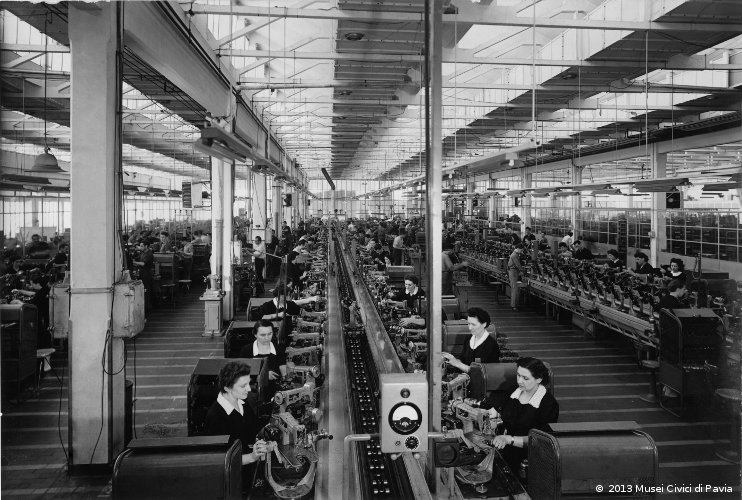 |
| The Necchi factory in Pavia, Italy. |
The War & Two Escapes
When Nazi Germany invaded Poland, Jolson and his family first suffered ever-increasing oppression in the Jewish ghettos until it became clear that the Nazis were forcing Jews into camps. Leon managed to avoid the worst until 1943 when he was sent to a concentration camp.
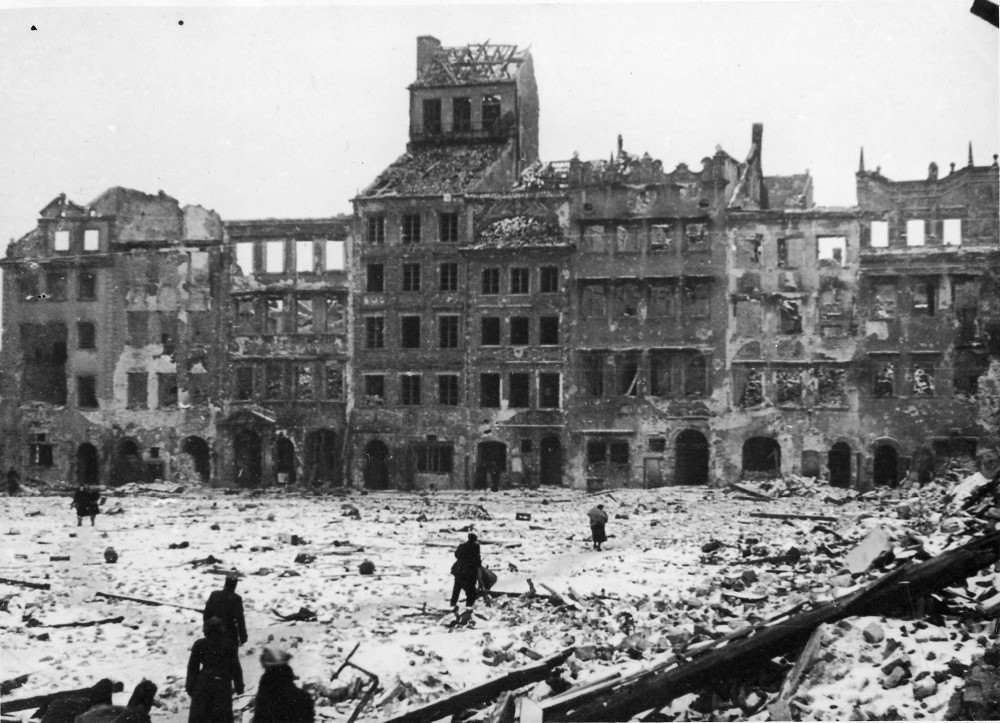 |
| 1945: Wartorn Warsaw |
As they were being transported, the imprisoned couple courageously jumped from a moving train and successfully hid on a farm, aided by an illiterate farmer who allowed them to serve as accountants for a few months. By 1945, with the war ending, the couple found themselves in U.S. held territory in Germany, safe but still fearful with an uncertain future.
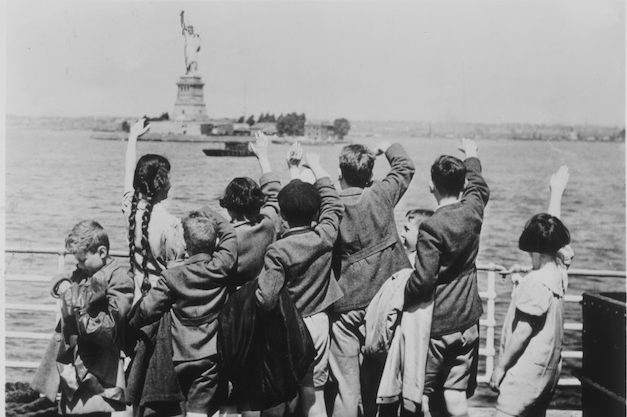 |
| Looking upon Lady Liberty, Jewish immigrant children reach America. Image: US Holocaust Museum. |
Jolson Arrives in America
The Jolsons arrived in New York in 1947. Some biographies say he was penniless while more than one source claims he had a mere eight dollars in his pocket. It is certain that he had a numbered tattoo from the concentration camps.
Setting out to leverage his experience as quickly as possible, he combed the streets of the garment district to understand how sewing machines were bought and sold in New York. He found that parts were scarce in the post-war marketplace, so the used machine trade was bustling. Buyers needed resourceful "agents" to do footwork purchasing parts and machines while the business owner focused on producing garments.
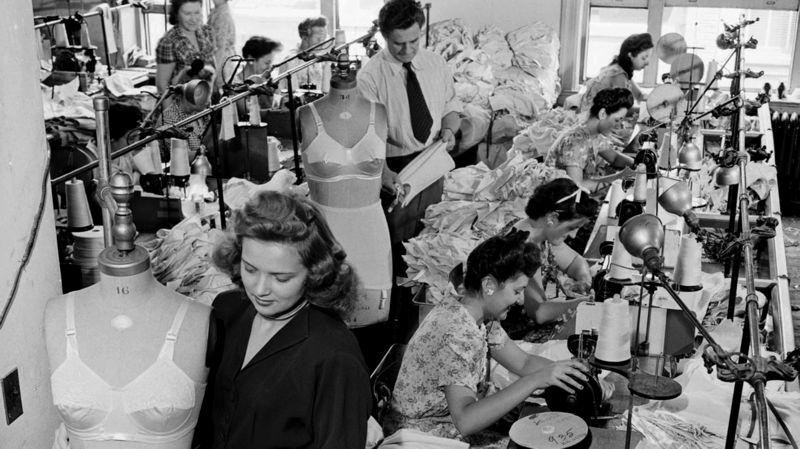 |
| Workers in the garment district. |
He obtained a small loan through the United States Service for New Americans and was able to establish a workshop in a Bronx apartment. A few rooms with shabby furniture were a long way from the life he had lived before the war as head of Necchi Corporation's Eastern European sales. Now following years of hardship and the horrors of Nazi oppression, the Jolsons had faced an apartment shortage in New York. Even this grim dwelling in an equally grim neighborhood brought pure joy - an encouraging success - for the couple who had leaped from a train to save their own lives just a few years prior.
Struggles and Setbacks in New York
Jolson quickly observed that American machines lacked the features of the Necchi models he had helped design and sell in Europe. He eagerly wrote to the Italian company describing a promising U.S. market and requesting some inventory to launch a sales effort. Necchi's response was slow, with little appreciation for Jolson's previous role with the company. They expected Jolson to prove the demand with a sizable order. All they would send would be a few demonstration machines, and not quickly.
 |
| A 1950 ad boasts the benefits of a Necchi machine. Jolson correctly predicted that American women would love these features. |
He didn't give up.
At last he attracted the attention of two businessmen willing to invest $50,000. Ben Krisiloff and Milton Heimlich had become convinced of Jolson's vision - the Necchi would surely introduce Americans to a better machine. Jolson and Krisiloff met with Necchi's owner and namesake, Vittorio Necchi, at the factory in Pavia, Italy, and convinced him of their vision as well. Necchi ordered 135 machines for the American-based upstart.
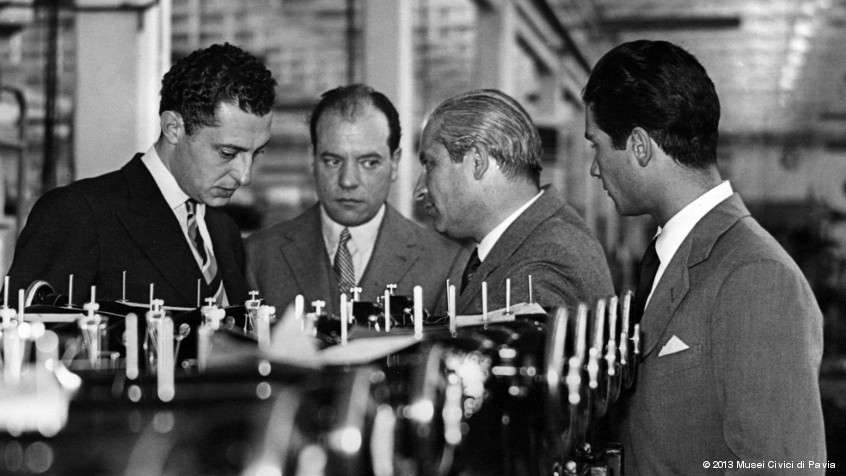 |
| Third from left, Vittorio Necchi meets with business associates at the factory in Pavia, Italy. |
Business expanded rapidly, and next Jolson led the company to become the U.S. dealer for the Swiss brand, Elna - another elegant, forward-thinking design that made American machines appear traditional and all but featureless, lacking the exciting stitches of the European models. American tastes were expanding toward more colorful products and advanced technology as the dark cloud of war receded.
Jolson Introduces the Nelco Sewing Machine in America
 |
| In his Nelco ads, Jolson emphasized his connection to Necchi and Elna in order to bring legitimacy to the Nelco brand. Notice the ad includes all the "keywords!" NECCHI, JOLSON, NELCO! |
Soon, Japan brought tremendous influence to the market as well with colorful machines and advanced stitching ability. Since Japanese machines were significantly cheaper than Elna and Necchi, it was clear to Jolson that his company would benefit from a lower-cost option to compete with the Japanese imports.
He cleverly contracted with a Japanese manufacturer to create his own brand. "Nelco" machines became popular and were sold in mainstream department stores like JCPenney and Walmart.
Below you see a Necchi Supernova Julia and a Nelco, which clearly takes styling queues from the Julia. While the Nelco wouldn't have been anywhere near as sophisticated as the Necchi with features and capabilities, it's Japanese engineering would have been rock solid with a great straight stitch and a few basic zig-zag options. Notice the all-caps black and silver NELCO badge - looks sort of like the NECCHI badge, right?
 |
| An American buyer who wanted European styling but just a few stitch options could save considerable money choosing a Nelco over a Necchi, and still own a rock-solid machine. |
A lot of European models which are high priced are not better in performance, precision and finishing versus the moderately priced machines made in Japan... The lower price of a Japanese-made machine does not mean that it is of poor quality, but comes from a completely different industrial concept... You can believe me, as in my lifetime I have work and been affiliated with sewing machine manufacturers in Germany, Switzerland, Italy and Japan.Unfortunately for Jolson and his partners, Necchi and Elna representatives took notice of more than just Jolson's ability to capitalize on the well-built Japanese machines. The European companies took issue with how Jolson had arguably appropriated their established brand names, combining Necchi and Elna into the word Nelco, as in NEcchi and ELna COmpany. He had also trademarked the term Necchi-Elna Sewing Circle for use by his dealers.
By 1963, lawsuits had ended Jolson's licensing and dealerships with the original brands, but through negotiations he was permitted to keep the Nelco name. It remained in dispute for quite some time as to whether it was legal for him to reference his experience with Elna and Necchi brands in his marketing material. Conflicts regarding branding and Jolson's marketing claims persisted well beyond the initial litigation. As late as 1984, the owners of Elna raised a significant suit against Nelco.
Elna asserted in court documents:
Subsequent to 1963, Jolson followed a practice of identifying himself as a former distributor of Necchi and Elna machines. He did this by affixing labels to Nelco machines; by including material in printed 'hang tags' which were tied on to Nelco machines; and by referring to the former relationship in printed advertising matter.Jolson was forced to stop using the brand names Elna and Necchi in his corporate literature, and to stop naming models with monikers clearly evoking Elna model names - such Nelco Prima Vera versus Elna Primula when the machines were virtually identical and manufactured in the same Japanese factory.
Jolson the Philanthropist
Upon his death, The Washington Post reported:
Mr. Jolson used his business profits to help other displaced people and keep the history of the Holocaust alive. In 1952 he gave $10,000 to Columbia University Teachers College, stipulating that the money be used to assist refugees without regard to race, religion or nationality. The Leon Jolson Award, administered by the Jewish Book Council, supports nonfiction authors writing about the Holocaust.Understandably, Jolson's focus on the war's impact and aftermath had been an overarching theme and purpose throughout the latter half of his life. He had even attended Adolf Eichmann's trial. Eichmann, a high-ranking orchestrator of the Holocaust, was hanged in 1962, with his final words being, "I hope that all of you will follow me."
Owning a Vintage Nelco Sewing Machine
With Jolson's story in mind, to own a vintage Nelco is to possess a reminder of Holocaust survival, perhaps an homage to Jolson himself, and surely a reminder of America's unique greatness as the land of opportunity. It also provides one of many tales of corporate intrigue and trespass within the sewing industry.
They're also typically just great machines!
 |
| Grant Gray's favorite domestic machine... "bar none!" he emphasizes. |
I have owned literally several hundred of machines. The two I won't sell are my first machine (a clone) and my Nelco R-2000. It is the best machine I have found for home use, BAR NONE!!! Yes, I said NONE!The story of Jolson's Nelco brand raises interesting points about intellectual property and trademarks. One might argue that Jolson unscrupulously took advantage of the Elna and Necchi brands' valuable reputation - that was certainly the contention of the European brands, and the final decision in court. But then the philosophical question arises, did Jolson ultimately make up for those flaws by virtue of his philanthropic nature?
Or what of the fact that Elna and Necchi enjoyed success in America largely because of Jolson's predictive wisdom? He was the first to import the brands to a significant degree, the first to even see the real genius of it, and Necchi and Elna profited greatly just as Jolson made his fortune in America.
Where did his enterprising nature (he was perhaps the ultimate "comeback kid" in the sewing industry) and his questionable branding practices intersect and diverge? What do we admire, what do we condemn, and what do we forgive when we think of the phases of Jolson's life?
 |
| A Nelco from the Still Stitching collection. |
 |
| Nelco machines on Craigslist. |


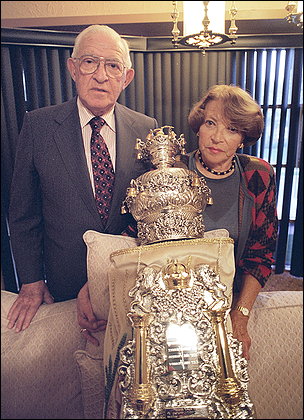
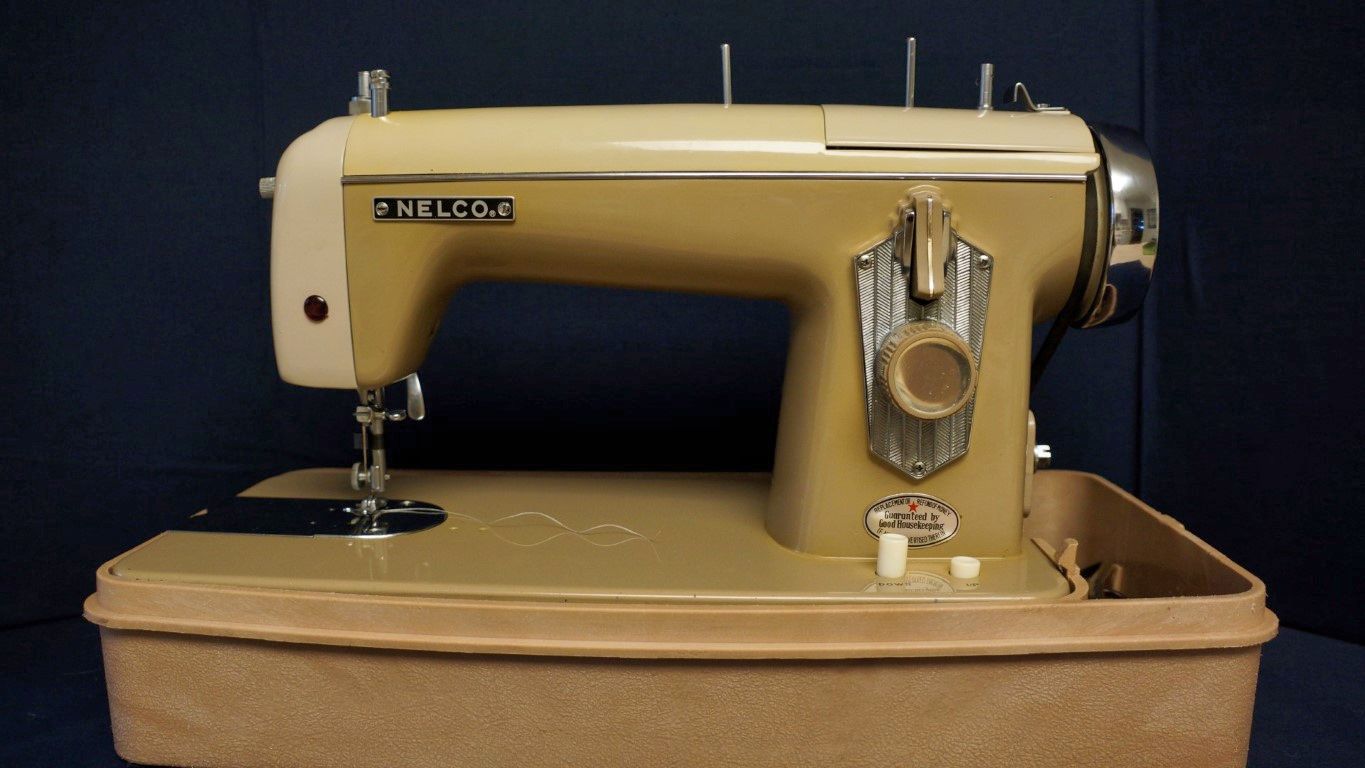
9 comments:
Interesting biography of Leon Jolson. Well written. I look forward to reading more like this.
Mike Kraemer-Stagecoach Road Vintage Sewing Machine
Great article! I have recently acquired a Nelco similar to the one you have shown above with the bobbin winder behind the panel, and need a part. The manual shows it to be an A-3, but I can't find parts offered anywhere. Do you know of a place I could look, or a similar machine from a different brand that would have compatible parts? Thank you!
I received a NELCO sewing machine as a gift for my 24th birthday. It is April, 2020, and I am using it to sew protective masks for Corona virus protection! It is a workhorse, and I can't imagine ever trading it in on ANYTHING! It is all metal, and I have taken good care of it. The salesman, gave me excellent instruction on its care, cleaning and lubrication, and I have followed those instructions religiously. It has made tailored suits, filled vests and jackets, curtains, slipcovers, stuffed animals, and many things that I have long ago forgotten! This is the first time I have actually heard the whole story of Mr. Jolson! Thank you for this!
Bisnonna, do you have the manual??? I have a NELCO s-700 but don't have the manual or any instruction about how take good care of it. Could you please give me instructions on its care? or maybe principal parts of it?. I think reverse button it's broken in my machine :'(
I'm using my nelco to sew protective masks too! I love it! it´s just a great machine!
Thank you!!
I got my Neclo for my 61 birthday from a frend who didn't know a thing about it..its a bicentennial 1776-1976 .red white and blue,,very cool,wased it up and oiled it hey!it works.. looked it up on line and found this .which was glad I have this, model 52A525.. by the way my birthday is also in april,,
I was given this Nelco model 52A525 .Its a bicentennial 1776-1976 red white and blue.. For my 61 birthday ,which in April 29 th..From a firend,who knew nothing about it also me so did some looking and found you.. which great...cleaned it up and oiled it..next steo is to sew on it,, I did my masks on my Viking 1100 ..it went to shop died. waiting a new moter.32 years old.. sew a lot silp covers are waiting doll clothes are waiting,curtains are waiting,,so be sewing them up on this one,,looking for a manual...ps still have masks to sew up.. and few lap quilts.. thank you for the history marie of discovery bay ,,Washington...
My husband, now 84 sold sewing machines for living. Sold Elnas when they first came out, but when he got the Nelco, it was much preferred because of its quality, heavy duty, and I tried it once and gave him my new Elna to sell and used the Nelco heavy duty to sew my childrens cloths, for quilts, it sewed through leather( husbands belt) without missing a stitch, ( with heavy duty needle of course) and through silk just as precise a stitch. Best machine I ever had! Thank you for this history on Jolson. How could I get a copy of his story.
Really a great addition. I have read this marvelous post. Thanks for sharing information about it. I really like that. Thanks so lot for your convene. marine valve
My machine is the R1000/ J-C36, with a name plate that says Jolson. While I researched the machine, in 2013, I found that it was a Nelco. All my machines are in another state currently so I am looking for attachments, correct bobbin size, and needles. I miss sewing. I came across this article. I love knowing the deeper history of things. Thank you.
I'm stuck here with you, the nameplate to my machine says "Jolson" not Nelco. It's built into a table, with the serial number; SZ00182456, and model number JA5
Post a Comment